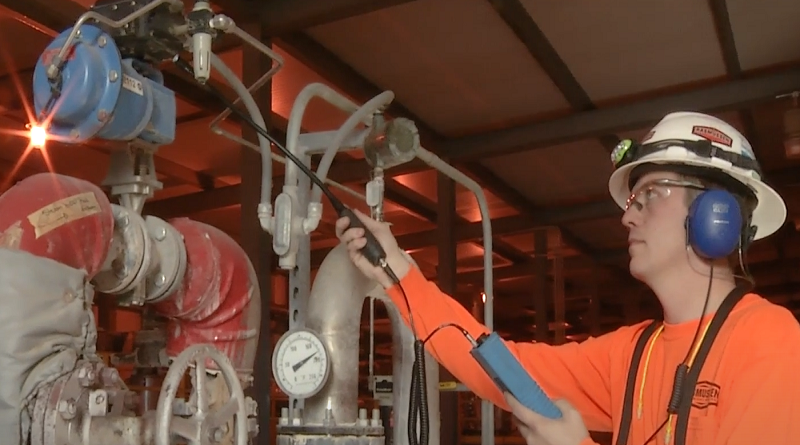Answering FAQs About Industrial Air Leak Testing!
A lot of business leaders don’t know this, but air leak testing is often a necessary precaution for most commercial properties.
It’s normal to be confused about industrial air leak testing, which is why we’ve partnered up with the industry specialists at Z-Axis to answer some frequently asked questions (FAQs) that people have about these valuable services.
So if you’re currently thinking about investing in air leak testing but aren’t quite sure what it is or why you need it, check out the below sections to see if your concerns are answered!
What exactly is air leaking?
The term air leakage technically refers to any unwanted airflow that goes through a sealed container or the walls of a structural vessel. Air leakage is often the result of pressure variations, which are common in most industrial settings.
The vast majority of air leaks originate within vessels and sealed containers, which is why air leak testing is so important to firmly verify whether or not an air leak is occurring at your commercial property.
What is industrial air leak testing?
Air leak testing is a professional method that helps business leaders determine whether or not their sealed containers and/or vessels are meeting certain leak-tight standards and specifications. Failed seals, tiny holes, and all sorts of defects can cause air leaks to create serious issues for businesses that utilize tech-savvy devices.
Industrial air leak testing can be done on just about any product that requires a watertight or airtight construction. Air leak testing is also provides valuable analytical data on top of detecting leaks, which can help businesses eliminate the many issues associated with manufacturing and design flaws.
What are the common advantages of air leak testing?
There are many advantages associated with industrial air leak testing, especially when you compare this testing to other leak test processes. Three significant advantages associated with air leak testing include:
- Time Saving: A lot of air leak tests are partially or fully automated, which means the equipment is straightforward and easy to use. No special training is typically required, and maintenance requirements are often minimal.
- Improving Quality: Air leak testing allows businesses to clearly quantify their leak standards, as well as reduce their overall product defect rates. This type of data is also valuable for statistical analyses.
- Cost-Saving: Air leak testing helps countless companies to improve their product yield rates, and this is partly because they’re subsequently reducing their reject numbers. This also helps businesses to reduce their overall operational costs, which helps maximize profit margins.
What are the most common air leak testing methods?
There are many industrial air leak testing methods that business leaders should know about. The most common of these methods include:
- Submersion & bubble tests
- Ultrasonic measurements
- Pressure decay testing
- Vacuum decay testing
- Helium sniff testing
- Helium spray testing
- Helium accumulation testing
- Nitrogen purge testing
- Hard vacuum testing
What’s the difference between pressure testing & air leak testing?
Pressure testing refers to a type of stress testing that helps professionals determine whether or not a vessel or tech component can withstand certain amounts of air pressure without incurring damages.
Air leak testing refers to detecting the presence of and locating leaks within pressurized, sealed vessels or containers.
What type of air leak testing is needed for medical devices?
Many medical devices rely heavily upon air leak testing to ensure patient health and proper functionality. This is partly because a lot of medical devices use gases and/or fluids, which require correct passages.
Many medical devices routinelyneed air leak testing methods like vacuum decay, pressure decay and tracer gas testing. There are also many unique considerations that need to be taken into account while testing medical devices for air leaks, including specific adjustments for elastic/flexible materials, avoiding corrosion, and meticulous tracer gas removal.
How do you conduct automotive air leak testing?
Many automotive systems and components require air leak testing, including exhaust components, brake lines, radiators, engine intake manifolds and AC components.
There are many different options for automotive air leak testing, and the best testing method will largely depend upon where the leak is originating. From basic bubble testing to tech-savvy pressure decay testing, there are many different ways to conduct automotive air leak testing and better understand a vehicle owner’s ongoing issues.
Reach Out To Z-Axis To Learn More About Industrial Air Leak Testing!
It’s normal for business leaders to have questions about industrial air leak testing, and the above questions are just a brief glimpse into the many concerns that companies have prior to making these types of maintenance investments.
If you need air leak testing at your business and aren’t quite sure what to do, check out the link located at the top of this page and speak directly with the industry specialists over at Z-Axis!

